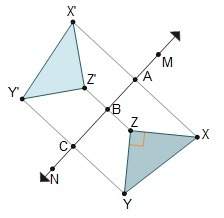
Mathematics, 10.02.2021 18:20 sandy461
A town was considering a new tax to fund a recycling program. Residents were randomly surveyed about whether they supported the tax. The results are shown below in the conditional relative frequency table by column.
A 4-column table with 3 rows. The first column has no label with entries female, male, total. The second column is labeled support with entries 20%, 80%, 100%. The third column is labeled against with entries 74%, 27%, 100%. The fourth column is labeled total with entries 56%, 44%, 100%.
What conclusion can you draw about the conditional relative frequency of the results?
There is no association between supporting the tax and gender.
A resident in the group who supports the tax is likely to be female.
A resident in the group who supports the tax is likely to be male.

Answers: 1


Other questions on the subject: Mathematics

Mathematics, 21.06.2019 14:30, JustinLaucirica
Consider a graph for the equation y= -3x+4. what is the y intercept? a) 4 b) -4 c) 3 d) -3
Answers: 1

Mathematics, 21.06.2019 18:00, duplerk30919
What is the difference between the predicted value and the actual value
Answers: 1

Mathematics, 21.06.2019 19:30, makaylahunt
Aregular pentagon with a perimeter of 21 inches is dilated by a scale factor of 5/3 to create a new pentagon. what is the perimeter of the new pentagon?
Answers: 2

Mathematics, 21.06.2019 21:40, kellyroy74
Drag the tiles to the correct boxes to complete the pairs. label each function. as even , odd, or neither.
Answers: 1
You know the right answer?
A town was considering a new tax to fund a recycling program. Residents were randomly surveyed about...
Questions in other subjects:

Mathematics, 01.04.2020 19:59




English, 01.04.2020 19:59

English, 01.04.2020 19:59




Biology, 01.04.2020 19:59




